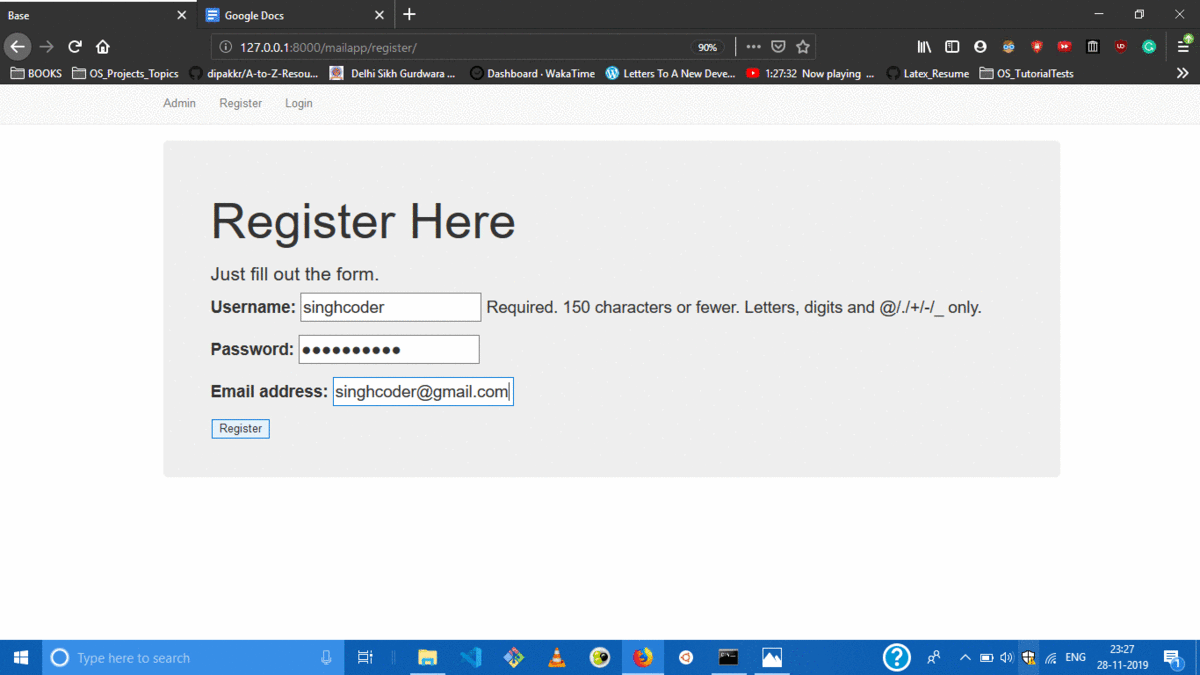This project a part of course Cryptography, BITS F463 done at BITS Pilani under Prof. Ashutosh Bhatia.
- While sending emails on Gmail we cannot be sure whether the information remains confidential since Google can still access the mails.
- We wanted to make sure that the content is only accessible to the desired recipient and no one else has access to the message shared.
- A web app to send emails using Gmail but in encrypted format.
- Key exchange implemented through asymmetric cryptography (Elliptic Curve)
- Message encryption by Advanced Encryption Standard (AES) using Stanford Javascript Crypto Library (SJCL).
- Built UI on the top of the basic UI available here
- Used SJCL library provided by Stanford for encryption and decryption purposes.
- Used Django as the backend framework and it’s native SQLite database for storing metadata related to encryption
- Achieved secure key exchange through asymmetric cryptography (ElGamel through Elliptic Curve).
- User registers on the portal.
- User logins into his account and is redirected to the home page.
- The home page contains a text box for typing in the message to be sent and a list of users already registered on the portal navigable through a search box.
- If the user’s public-private key pair does not already exist, a new public-private key pair is generated. Private key is stored in local storage while the public key is stored in the Django database - both in serialized form.
- Otherwise, the private key of the user is retrieved from the local storage and public key from Django database User selects the recipient from the list as receivers using search box.
- User enters the message and presses the ‘Encrypt’ button.
- If sender-receiver pair session key does not already exist, a symmetric key symKey is created.
- It is encrypted with both users’ public keys (through Elliptic Curve Cryptography)
E(PUa, symKey) = sk_sym1
E(PUb, symKey) = sk_sym2
sk_sym1 and sk_sym2 are stored in the database.
- Otherwise, retrieve sk_sym1 (Encrypted public key of sender) from the database.
- The symmetric key for encrypting the message (session key) is deciphered using
symKey = D(PRa, sk_sym1)
CT = E(symKey, PT) (AES)
- User is redirected to Gmail to send the encrypted message.
- Receiver logins into the portal and enters in browser the link he receives on GMail and he gets the message decrypted.
-
HTML, CSS, JS : For frontend
-
Python, Django: For backend
-
SJCL (Stanford Javascript Crypto Library): For encrypting and decrypting the messages and for key exchange
-
References



